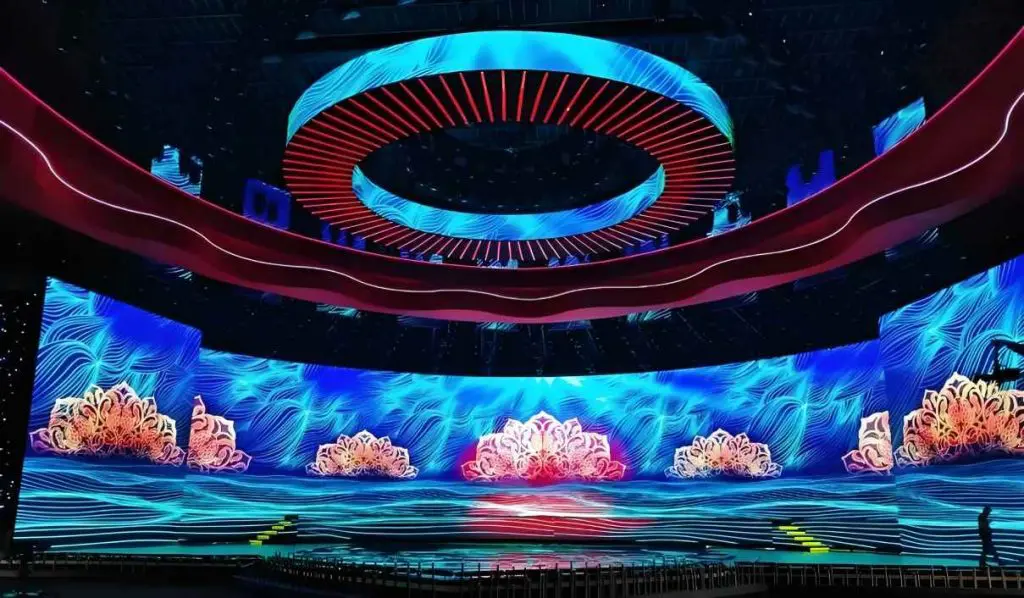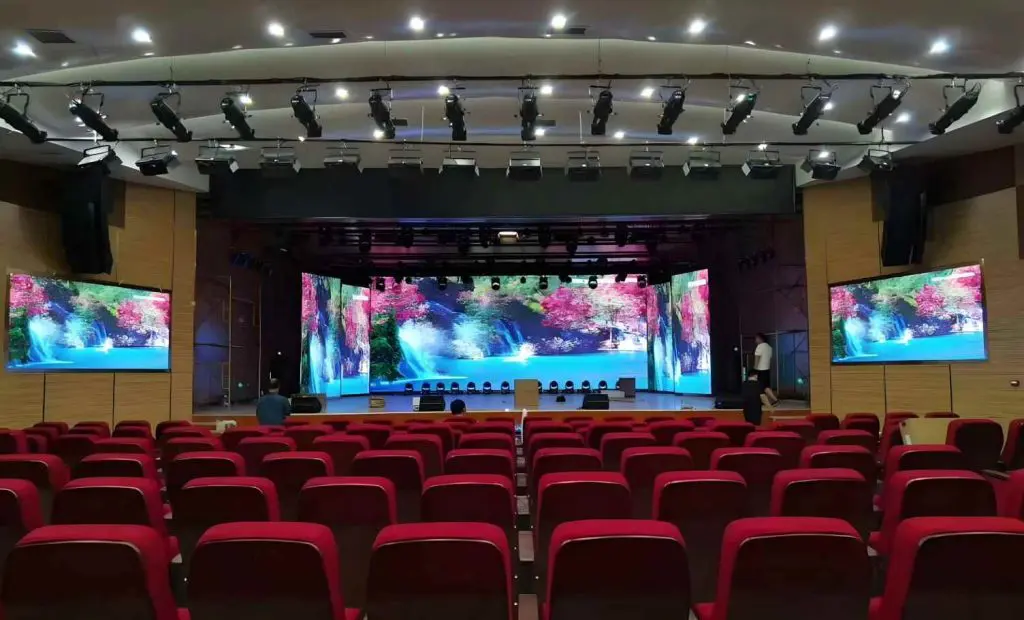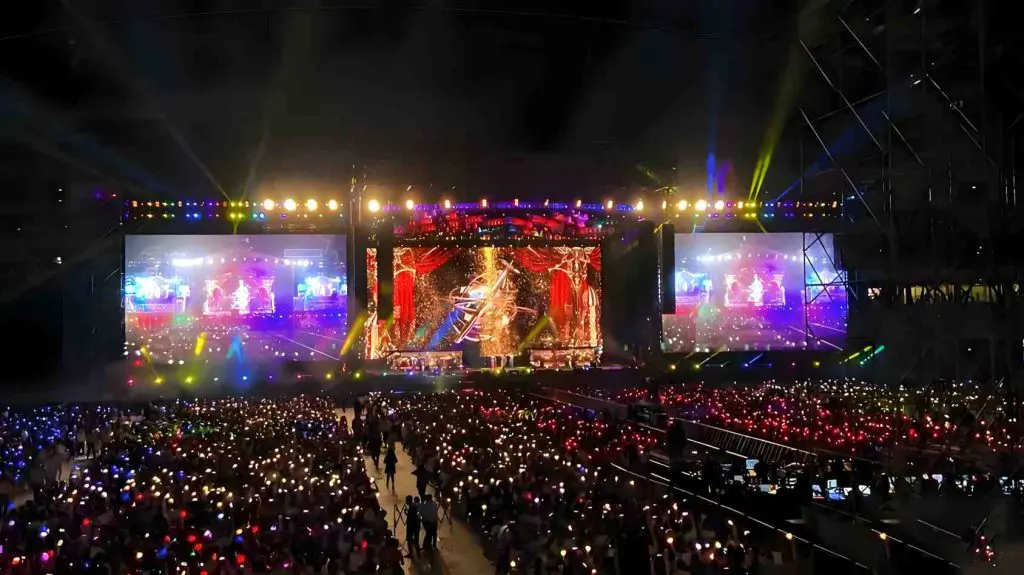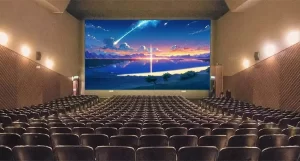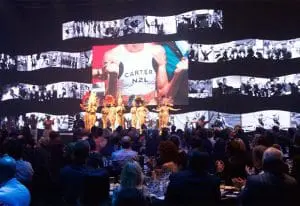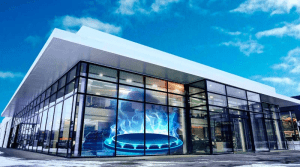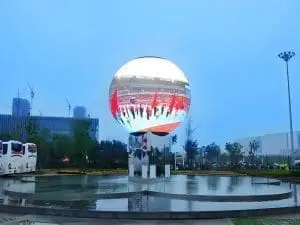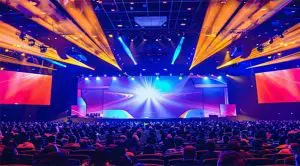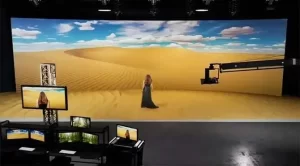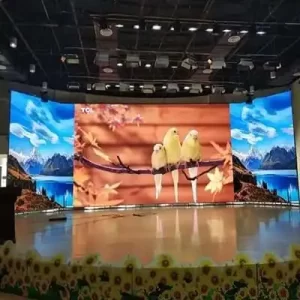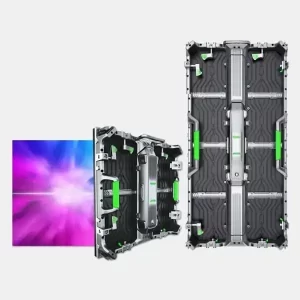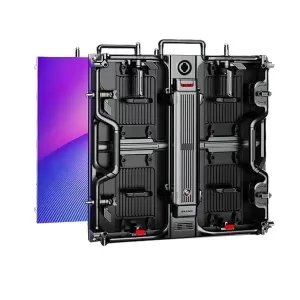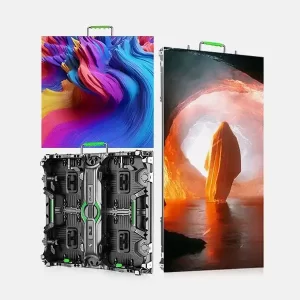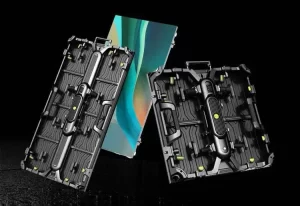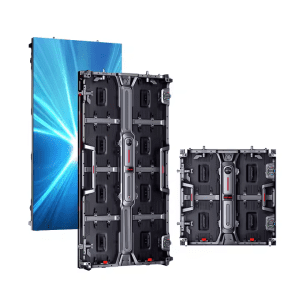Concert stage screens have become a quintessential part of modern live performances, transforming ordinary stages into immersive visual experiences that captivate audiences. These screens, typically built with LED technology, provide dynamic backdrops, live video feeds, and synchronized visual effects that elevate the energy and engagement of concerts, music festivals, and other large-scale events.
This guide explores the structure, technology, benefits, challenges, and applications of concert stage screens, offering insights on how they create unforgettable performances.
What is a Concert Stage Screen?
A concert stage screen is a high-definition digital display, commonly composed of LED (Light Emitting Diode) panels, designed to bring visual elements to life during live events. These screens serve multiple purposes, including:
- Displaying live video feeds of performers.
- Showcasing animated visuals synchronized with the music.
- Branding and advertising for sponsors and event organizers.
- Engaging the audience with interactive media, lyrics, or special effects.
Whether it’s a main stage centerpiece or auxiliary side screens, concert stage screens enhance the visual appeal, ensure visibility across large venues, and amplify the overall atmosphere.
Structure of a Concert Stage Screen
Concert stage screens are modular and scalable, allowing for flexibility in size and configuration. They typically include the following components:
- LED Panels:
- The building blocks of the screen, composed of individual LED modules.
- Available in various pixel pitches (P1.2–P6), determining the resolution and clarity.
- Control System:
- Includes video processors and media servers to manage and synchronize content playback.
- Frame and Mounting System:
- Ensures stability and enables configurations such as flat, curved, or even 3D screens.
- Power Supply Units:
- Provide the necessary power to drive the LED modules and ensure consistent brightness.
- Signal Transmission System:
- Uses cables or wireless systems to synchronize visual content.
Types of Concert Stage Screens
1. Main Stage Screens
- Purpose: The primary visual centerpiece, used for live feeds, animations, and effects.
- Features: High resolution (P1.2–P3) for detailed visuals visible from all angles.
2. Side or Auxiliary Screens
- Purpose: Located on either side of the stage, ensuring visibility for distant or peripheral audience members.
- Features: Slightly lower resolution (P3–P6) as they cater to a larger viewing distance.
3. Floor Screens
- Purpose: Dynamic screens integrated into the stage floor, reacting to performers’ movements.
- Features: High durability and load-bearing capacity, with interactive capabilities.
4. Backdrop Screens
- Purpose: Serve as a seamless visual background for the stage, enhancing aesthetics.
- Features: Can be flat, curved, or modular, allowing for artistic stage design.
5. Transparent LED Screens
- Purpose: Provide semi-transparent visuals, enabling visibility of performers behind the screen.
- Features: Lightweight and futuristic, perfect for creative stage effects.
6. Ribbon or Banner Screens
- Purpose: Used for displaying scrolling messages, lyrics, or sponsor logos.
- Features: Flexible and customizable in size, ideal for branding or audience communication.
Benefits of Concert Stage Screens
1. Enhanced Audience Engagement
- Screens ensure visibility across large venues, allowing even distant audience members to feel connected to the performance.
- Dynamic visuals and live feeds create immersive experiences that heighten emotional impact.
2. Versatile Visual Effects
- Synchronized animations and light shows amplify the energy of live music.
- Screens can adapt to multiple themes, genres, and moods, offering unlimited creative possibilities.
3. Branding and Sponsorship
- Concert screens provide a prime advertising platform for sponsors by displaying logos, commercials, and promotional content.
- Artists and event organizers can showcase custom branding, enhancing the professional appeal of the event.
4. Interactive Features
- Use screens for live audience interaction, such as displaying social media posts, polls, or real-time messages.
- Lyrics or visual cues on screens allow the audience to sing along and actively participate.
5. Flexibility and Scalability
- Modular design allows screens to be scaled up or down depending on the venue size and stage layout.
- Screens can adapt to indoor or outdoor environments, making them versatile for any event type.
Challenges of Concert Stage LED Screens
1. High Costs
- The initial investment for high-resolution LED screens can be significant, especially for large venues.
- Additional costs include power consumption, maintenance, and content creation for the visuals.
2. Technical Complexity
- Managing a multi-screen setup requires skilled technicians to handle synchronization, troubleshooting, and content playback.
- Delays or glitches during live performances can disrupt the flow of the event.
3. Environmental Factors
- Outdoor events must account for weather conditions, such as rain, wind, and sunlight, which can affect screen performance.
- Brightness levels must be carefully adjusted to ensure visibility in different lighting environments.
Applications of Concert Stage Screens
1. Music Festivals
- Large LED walls are used for visual storytelling, creating unique themes for each artist or performance.
- Side screens ensure that every attendee, regardless of their position, has a clear view of the stage.
2. Touring Concerts
- Modular screens are ideal for touring setups, as they can be easily disassembled, transported, and reassembled at different venues.
- Visuals can be customized for each city or event, adding a personal touch.
3. Award Shows and Ceremonies
- Screens display live feeds, nominee spotlights, and sponsor advertisements, elevating the production value of the event.
4. Interactive Events
- Use screens to showcase real-time audience participation, such as fan-submitted videos or messages.
- Display trivia, polls, or gamified content to keep the audience engaged during breaks.
5. Branding and Advertising
- Concert stage screens offer lucrative opportunities for sponsors to showcase their logos and advertisements.
- Artists can use visuals to promote their albums, merchandise, or upcoming events.
How to Choose the Right Concert Stage LED Screen
1. Pixel Pitch
- P1.2–P3: Ideal for main stage screens where close-up details are critical.
- P4–P6: Best for side screens or distant viewing areas.
2. Brightness
- Indoor Events: Brightness levels between 800–1,500 nits are sufficient.
- Outdoor Events: Opt for 5,000–10,000 nits to ensure visibility under direct sunlight.
3. Size and Configuration
- Match the screen size to the venue and audience size.
- Consider creative layouts, such as curved screens or multi-layer setups, for added visual impact.
4. Durability
- For outdoor events, ensure the screens are weatherproof with an IP65 rating to withstand rain, dust, and wind.
5. Content Management
- Choose screens that are compatible with advanced control systems for live synchronization and real-time updates.
Cost of Concert Stage Screens
The cost of a concert stage screen depends on factors like resolution, size, and additional features. Below is a general price range:
| Screen Type | Pixel Pitch | Price Range (per m² USD) | Best For |
|---|---|---|---|
| Main Stage Screens | P1.2–P3 | $4,000–$8,000 | High-resolution visuals for performers. |
| Side Screens | P3–P6 | $3,500–$6,500 | Enhancing visibility for large audiences. |
| Floor Screens | P3–P5 | $5,000–$12,000 | Dynamic and interactive performances. |
| Transparent Screens | P3–P7 | $6,000–$12,000 | Futuristic and creative setups. |
| Outdoor Screens | P4–P6 | $5,000–$10,000 | Weatherproof solutions for festivals. |









